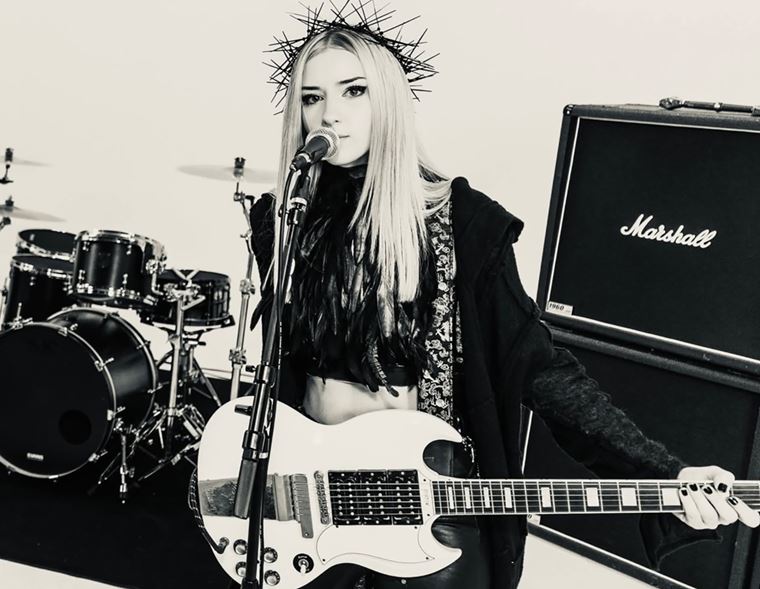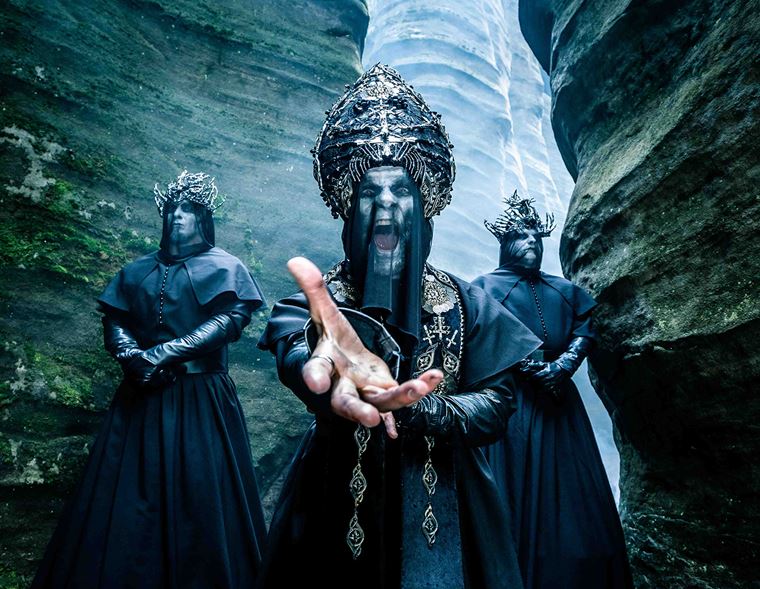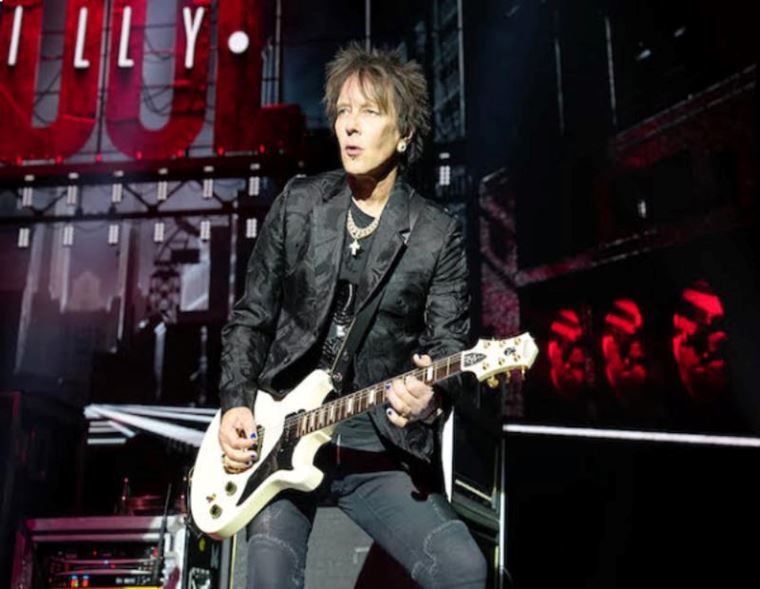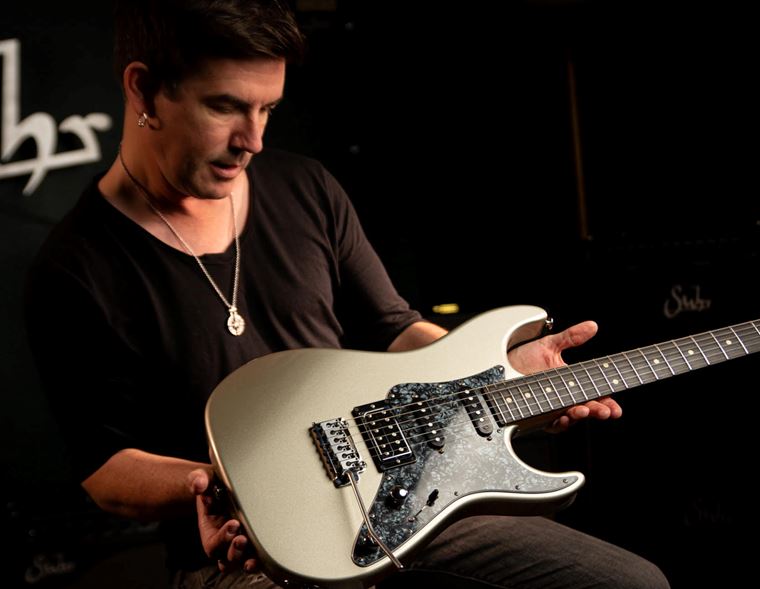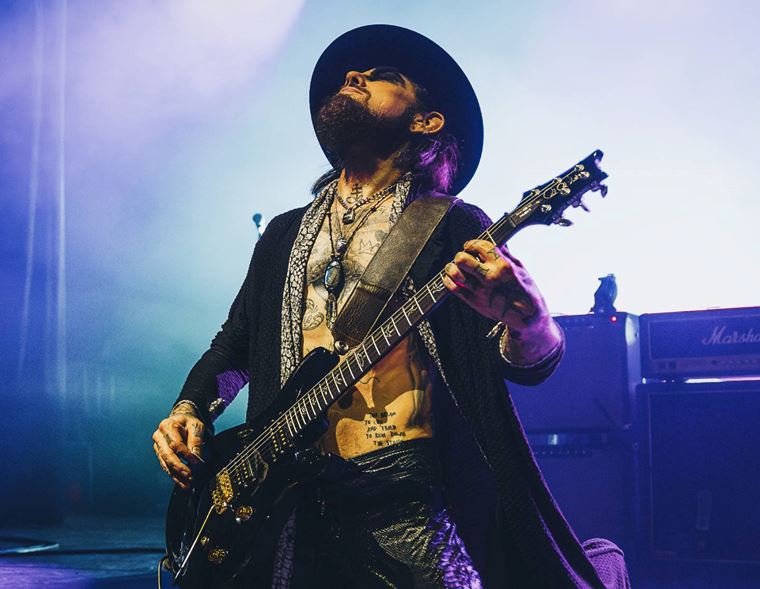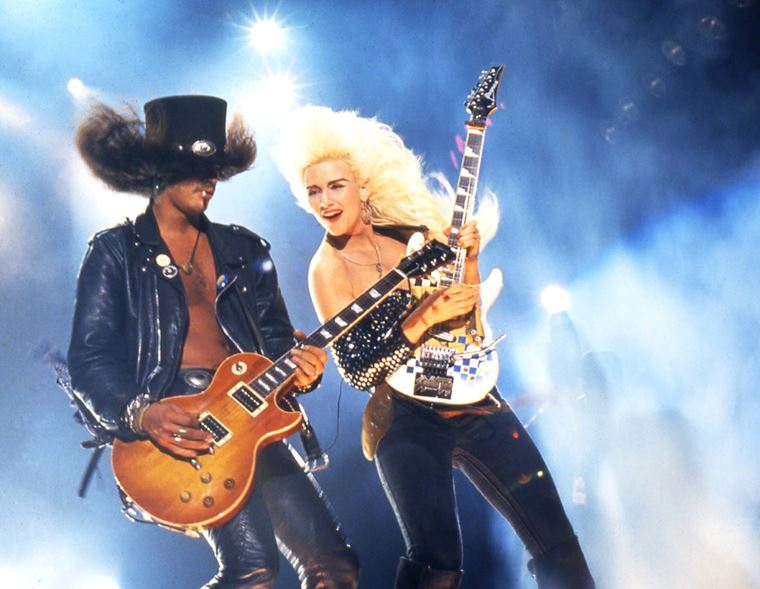Big Wreck's IAN THORNLEY talks to guitarguitar!
Published on 28 May 2021
How often do you hear people telling you about some band who are the ‘Most underrated band in the world’?
It happens a lot, doesn’t it? You kinda just nod your head and move on.
But Toronto’s Big Wreck really are the most underrated band in the world! Over in Canada they are a national treasure but over here, they are like a music fans’ best kept secret: those with a discerning taste in melodic hard rock are up to speed but the general masses are sadly missing out. It’s a shame: Big Wreck craft some of the most memorable, colourful, exciting and straight up rocking tunes currently in production. Bring yourself into the light and get listening already!
Central to the band is frontman Ian Thornley. He’s easily one of the greatest rock guitarists around right now, and he couples that with a frankly supersonic voice that goes from gravelly to stratospheric with no effort required at all. In short, the guy’s impressive.
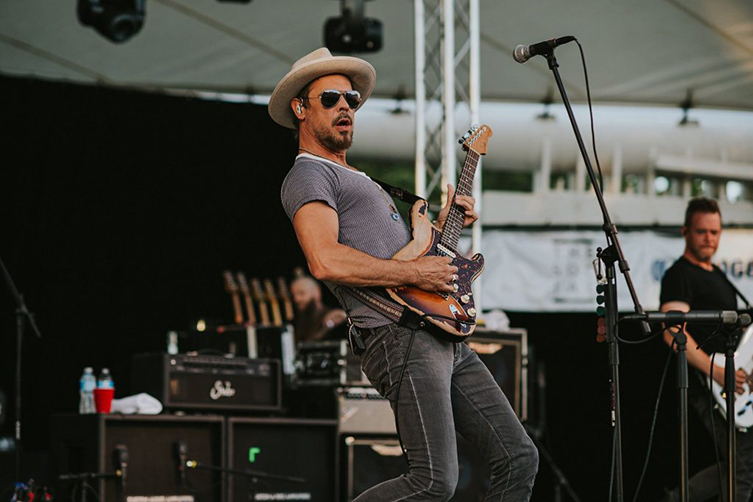
He’s also a big Suhr fan, which is good news for us, given our long, loving relationship with the brand. Ian’s already had a lovely signature JM model guitar from Suhr, and recently they released a fantastic Classic-S Ian Thornley model. We took that as a sign and made some moves to try and secure a chat with the man himself. Fortuitously, word got back to us that the band had just finished work recording new material, and that Ian was therefore commitment-free available for a chat. Good timing!
Questions quickly began to form as we prepared for our Zoom call. When you have the opportunity to have a conversation with a wonderful guitarist, who is also an incredible singer and a top songwriter, it’s more a case of what needs to be left out due to time constraints, rather than what to ask. Well, on this occasion, time was no barrier. As it turned out, not only was Ian happy to chat about all subjects, he was also an extremely friendly and verbose man: our conversation lasted longer than an hour and a half, and there were still things left unsaid!
We tried to pack as much into our time as we could, so there’s a lot to bite into here! We cover the recording process, writing, singing, gear, live sound, playing tips, setup tips, the lot! It’s comprehensive! It’s a long read, so let’s just dive straight in. Join us in Glasgow as we talk to Ian in his basement in Toronto...
Ian Thornley Interview
Ian Thornley: Can you hear me?
Guitarguitar: There you are! Hello!
IT: It works! Haha, I’m no good at this shit!
GG: That’s all good, how are you?
IT: I’m alright! Yourself?
GG: Yeah, good thank you! It’s 5 o’clock over here so I’m just finishing up and this is a nice way to end the shift!
IT: Nice! Yeah, absolutely.
GG: So, thank you for agreeing to chat to me.
IT: No problem at all!
GG: So, I have some questions: guitars, guitar playing, riffs, the whole bit. We’ll just batter through it and see how we get on, yeah?
IT: Shoot!
GG: Wicked man. So, the timing’s good because I didn’t realise you were recording new Big Wreck stuff! It was your new Suhr guitar that made me think of getting in touch.
Big Wreck in the Studio
IT: Yeah, we actually just wrapped a few days ago. I did some mix recalls and that was it. 15 songs. Yeah, it’s been weird because of lockdown and all that. Even the recording process, everybody being masked up and keeping their distance and all that shit, it’s been strange! But still, I’d just gotten off the road when it began, I’d just finished the tour for ‘But for the Sun’, and as the cycle goes, there’s usually a couple of months where there’s some down time: you know, family time and all that, which I relish. Then you start getting a bit itchy: it’s like, ‘let’s either start writing or rehearsing’. We had some summer shows booked, which obviously got blown out for 2020. Looking back, I think that whole year, I’ve just kinda been locked down and writing, which I would’ve been doing anyway. I attacked it with a different fervour because I didn’t know when the time would come, you know?
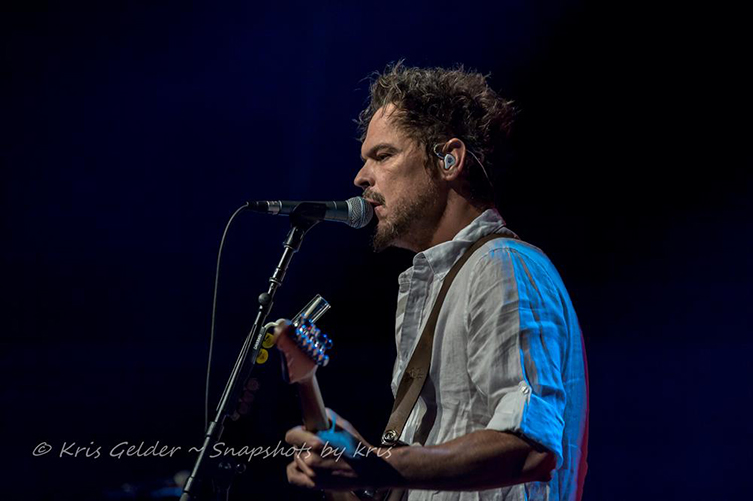
When it came up that we’d still be allowed to go to the studio – and the studio that we use is less than 100 yards from my house, which is very convenient (laughs) – it made the whole process very focussed. I think the music we got out of it shows that. I’m really proud of what we’ve got. I’m not sure how we’re gonna release it: I don’t know if we’re gonna release it all in one bang or if we’re gonna sort of part it out. We have a single coming out in a few weeks, and it’s just a standalone thing that we recorded at a different time, with a sort of special guest (laughs).
GG: Ooh!
“The songs are all in a cage match: the ones that win are the ones you keep”
IT: It’s a standalone single and not part of the record. Or records, as the case may be! So, you know, it has been a weird time, but it’s been great to come down here and bury my head in music and then go upstairs and hang out with the family. Even having the studio so close is the same thing: everybody can come over and we can have lunch together and stuff like that, you know?
GG: Sounds amazing!
IT: It’s kinda cool but also pretty weird!
GG: Yeah, definitely weird but that kinda sounds ideal for a writer and a musician. You’ve got a space that’s safe to record in and make demos and then you’ve got your actual studio not far away.
IT: Yeah.
GG: So, you mentioned that you were still recording together: you were masked up and distancing, but you didn’t have to do it all remotely. Is that something you just get used to? I don’t want to sound overly dramatic, but is that something you think comes into the tunes?
IT: Aaaah, not really, I mean, there were some hiccups when we first started. I think it was, I wanna say December when we first started recording. I had the tunes demoed up and sent off to the guys. Then there was some hiccups with Chuck, our drummer. A couple of days into the process, he had to bow out for personal reasons. God bless him and I love him, there was no arguments or anything but yeah, we were sorta like, ‘What are we gonna do for a drummer?’ We discussed it all and there’s a few hotshots around Toronto, you know? Some great players who we can call to come in and just kill it, like session guys, or journeymen or jobbers or whatever. I wasn’t really sure if that was what I wanted. I’ve always wanted it to be a band, I always wanted it to sound like a cohesive unit. So, I just called up Sekou.
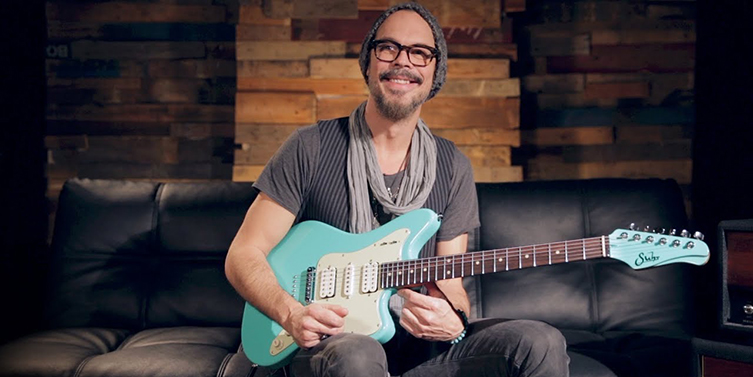
Sekou Lumumba was our drummer formerly, a long time ago, and him and I have maintained a friendship. I’ve always loved the way that he plays, and I’ve always loved the way him and I play together. Dave (McMillan, Big Wreck bassist) knew what Sekou played like; we’d rehearsed beforehand, and Dave was like, ‘God, I love playing with Sekou!’ (laughs) and it is radically different to playing with Chuck, obviously. They have different styles and it’s a different feel, you know? As you would imagine. So, it was a quick phone call to Sekou. I think it started with a text! And he was like, ‘Well, you know, I got time!’ (laughs) because everybody’s at home on lockdown! I started sending him music and we just started knocking them out, a couple of songs a day. Dare I say it, I think he’s gotten better over the years! It was just unbelievably smooth transition for what could’ve been really...we could've just been spinning our wheels. Instead, it inspired the sessions even more, just having a different personality coming in, with a different slant.
GG: Yeah, and as you mentioned, he has a different style, but not only that, he’ll bring an entirely different energy as well.
IT: Oh, totally!
GG: And Big Wreck is normally a 3-piece, right? Until you go on tour?
IT: Uh, pretty much. Once Brian passed, it was definitely that way, but even when Brian was in the band, generally speaking, it would be me doing the guitar parts in the studio. I do the lion’s share of the writing as far as guitar parts fitting together, and I generally spend a lot of time pitting all those pieces together.
GG: Yeah.
IT: And to have to, you know, Brian would be like, ‘You do it!’, you know? It was that kind of thing, and I still feel the same way: whatever’s quickest in the studio. It really does come down to that, whatever’s cheapest, you know?
“The whole process was very focussed and I think the music we got out of it shows that. I’m really proud of what we’ve got”
GG: Yeah, definitely.
IT: There’s no real...and I’ve said this many times: there’s no real room for ego when it comes to that. Whatever’s best for the part, you know? I’ve even got Dave playing guitar parts sometimes. You know that old reggae trick where you double the bassline with the clean guitar part to thicken up the line?
GG: Sure, yeah.
IT: Well, like: ‘Here you go, Dave! You do it!’ All of a sudden it glues together with the bass that much better than having me do it because I might be a little ahead or behind. It won’t feel exactly the same. Whatever is the best for the two speakers is going to be the best for us in the long run.
GG: That’s a good attitude.
IT: Chris Cadell is definitely part of the band, but yeah, when it comes to the studio stuff, like I said, I’ve spent a lot of time mapping stuff out beforehand. I tend to do a lot of one-takes. I know the part; I know the sound I want. We spend more time getting the sound dialled just so, than we do getting the part down. If the budgets were like they used to be many years ago, we could just take 9 months to make a record. In the studio, that’d be a whole different deal! But there is a certain satisfaction in working quickly. It’s a momentum engine, when you’re working quickly and you get to hear things and picture what the end result will be, I find that way more inspirational. I try to grab on to that and capture as much of that in whatever’s going down, as opposed to the frustration of going, ‘Oh my god, I can’t believe he’s not getting it!’, you know?
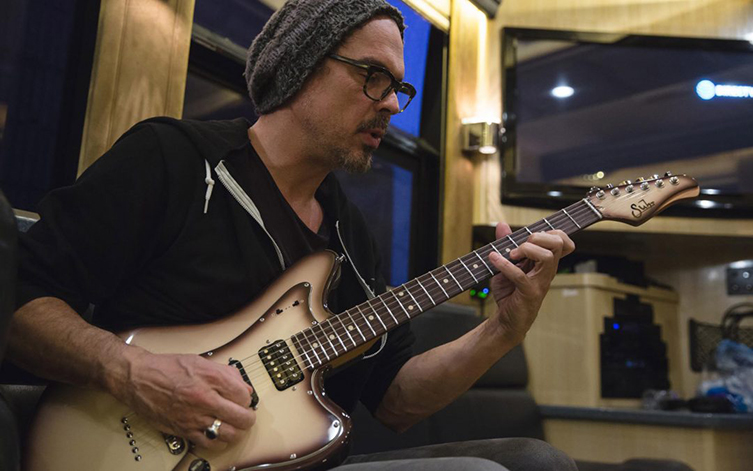
GG: Yeah, definitely. You can’t get into that mode. And with heavy rock guitar music, so much of the appeal lies in the kinetic kind of electricity that you want everybody to hear.
IT: Yeah!
GG: It isn’t something that you’re supposed to sit at a computer and shift the hi-hat across a wee bit on the screen until it’s quantised. It’s all about getting that life, isn’t it?
IT: Exactly, yeah. And nowadays with what you can do digitally with Pro Tools, I think it’s a mindset thing, because I agree with you: some of the imperfections in someone’s playing are what make it perfect. There’s a happy medium to be found, because it’s easy to zap the personality out of anything with a plugin or app where you can press, you know, return and all of a sudden it goes on a grid.
GG: The quantise button!
IT: Yeah! That’s not what we’re doing here. I think we’ve found a happy medium.
Writing, and Embracing Phil Collins
GG: That’s cool. And you said that you’d probably have been in a writing phase anyway, after coming off tour. So, do you write a bunch of songs, and then the other guys go through the to choose the ones they like, or do you tend to whittle them down to a definite list of songs?
IT: Well, it’s kind of a cage match between the ideas. Because I had so much time leading into the recording process, I was really able to sift through all the ideas down here and build, sort of go into my stockpile and say, ‘What if we tried something like this?’ and sometimes older ideas would be used, like I’d need a bridge so I’d grab an older idea. Or you grab a song that was never finished and it’s like, ‘I got this idea, I wonder if I just...’ and it becomes this new ting. All those things, over the course of several months...I’d amassed 17 or 18, maybe 20 songs that were ready to go into the studio and be recorded. Things can’t getting put off and put off, so I was like, ‘Okay, I’m gonna start dicking around with lyrics and melodies’, which is always the last thing for me in the writing and recording phase. I just kinda got to that before.
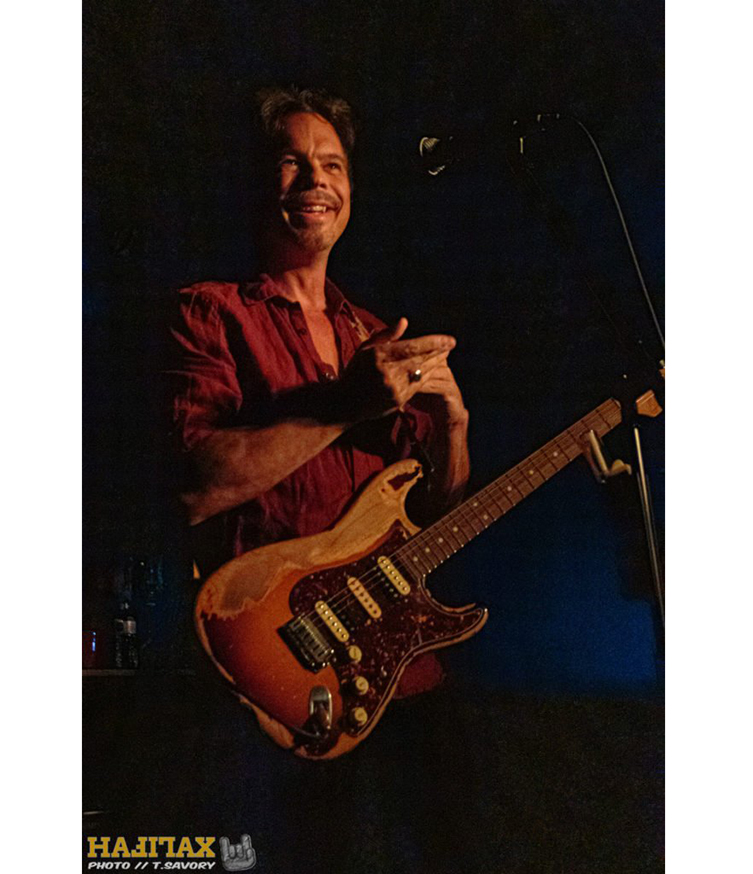
To answer your question, all the songs would go out: I’d be sending them out going, ‘What do you think of this? What do you this of this?’, and it becomes pretty obvious: if they’re all in a cage match, the ones that win are the ones you keep. If one of the guys is like, ‘Yeah, this one isn’t really doing the thing’, it doesn’t mean it’s a shit idea, it’s just not fully formed yet.
GG: Yeah.
“I never really fancied myself a singer or wanted to be one”
IT: That goes back in the pile and all the ones that are like, you can really see where it’s going, and you like where it’s going, those’ll make the cut. On this last recording, on these 15 songs, there’s nothing that shouldn’t be there. and stylistically, it’s all over the map: it’s like really swampy stuff, and really, really aggressive heavy stuff. Um, and everything in between, from the poppiest, sorta early 80s pop-influenced stuff. I started dicking around with a lot of different drum sounds down here, even just with samples. Things that I’ve always wanted to use, sounds that were like, ‘how do we take that and make it Big Wreck?’ Those kinda sounds! I just kinda figured out a way, and of course with the help of Ratz (Eric Ratz, producer), once we started doing it for real with microphones and real compressors and, you know, outboard gear and a big room, it’s a larger scale of the exact same thing. All of a sudden, we’ve created something I’ve never heard before!
GG: Brilliant!
IT: With the drum sounds, it’s like...it’s reminiscent of the Phil Collins thing but it’s way more aggressive! (laughs) And it hits harder. A lot of that’s probably due to the time and place, you know? It’s 2021, so if I wanted a gated drum sound, there are ways that you can stretch out the note without reverb! It’s not a gated reverb that we’re going for here! (laughs) Take the actual attack of the snare and you stretch it out! (Here, we both start making snare noises at each other, which we sadly cannot transcribe for you) That’s like a three second (another big snare noise) and then you chop it hard! It’s labour-intensive but man is it effective!
“On this last recording, there’s nothing that shouldn’t be there. Stylistically, it’s all over the map: it’s like really swampy stuff and really, really aggressive heavy stuff”
I’m going off on a tangent here, but this was a real ‘kid in a candy store’ record for me. All the swampy slide stuff sounds like swampy slide stuff, it’s not like, ‘let me sprinkle a little of that on the song’. Why not have it feel like we’re in Louisiana? (laughs)
I know a lot of that comes with age and experience and just not giving a shit what people think: that this is what we love and, you know, this is the kinda hat you wanna put on for this song. And you just put that hat on. If you’re surrounding yourself with like-minded people who are like, ‘Oh man, this feels good! That hits like good news!’, then, you know, you can really achieve something pretty magnificent. In my opinion! I’m pretty proud of this record: I think it’s the best record we’ve done.
GG: Oh well, I can’t wait to hear it! The discography so far is pretty excellent, so if this is the best one yet...
IT: Yeah, you always wanna beat your last one!
GG: On the last record, you certainly couldn’t have said ‘aggressive Phil Collins’ about it, haha! I’ll be looking forward to that one showing up!
IT: Yeah, you’ll know what I’m talking about when you hear it!
The Voice
GG: Now, there was something you mentioned earlier that I would love to pick up on. You said about how there’s really no space for egos in a band like Big Wreck. I learned only recently – in fact, after you’d already agreed to talk to me – that when the band started out, you didn’t want to be the singer and only did so out of necessity!
IT: Yeah. It kinda started with Brian and I in our apartment in Boston. That’s when the idea of doing a band started. We’d come up with these things that would eventually by ideas for songs: I’d come up with a melody, not so much laying down vocals but it eventually turned into that when Forrest (former drummer) got an apartment outside Boston and we’d demo these things. Still not really knowing how to sing, I would try to do my best approximation of what a singer would sound like. I never really fancied myself a singer or wanted to be one. It was always ‘if we do this, if we do this, we’ll get a singer’. And then once we actually started playing shows and stuff, and I was just sort of holding the place of the singer, if you will, we were constantly trying people. Some were great and just weren’t the right fit...um, it just proved to be difficult. Finding a singer’s really hard!
GG: Oh, totally!
IT: And it’s like, ‘well, that guy’s great but look at him! What’s he doing? Why’s he doing that on stage?’ (laughs) That happened a lot! Like, ‘This guy’s got the voice, man! Listen to that! But look at him, what is he doing?’ And it wasn’t about his appearance! It was about this fuckin’ schtick that he was putting on onstage!
GG: Yeah, yeah! Hahaha!
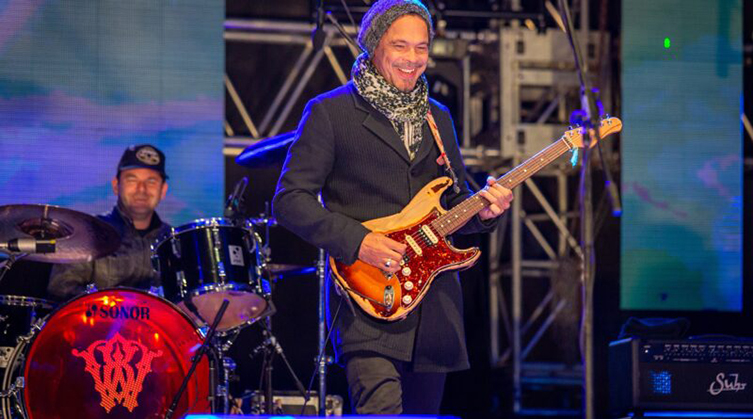
IT: It was like, ‘We can’t fuckin’ have that! Nope! Nope’. So eventually I was like, ‘Fuck it, I’ll do it’, and it was literally right before the demos which became our first album. I think it was shortly before then that I was like, ‘Alright, you know what? I’m gonna stop fighting it’. And then in interviews of course I’d still say, ‘I’m a guitar player who sings, man, I’m not a singer.’ Because I did not wanna be that guy. I didn’t want the front guy stigma, I didn’t want any of that.
GG: Okay.
IT: I still don’t, but I’ve gotten to the point now (laughs) where I don’t really care. I’ll sing the high note and fuckin’ whatever, it’s fine.
GG: Right, well, I don’t want to embarrass you or anything, but you are clearly a supersonically good singer. You’ve got a fantastic sounding voice!
IT: Aw, thanks. I, uh, I appreciate it. I don’t work at it! I had lessons for a while, like, recently, actually. Like maybe 4 or 5 years ago. I took lessons to see if there was anything I could do for maintenance, longevity and I was surprised to find out that a lot of the things I’d been doing instinctively were mechanically and physically the right things to do. A lot of that is Myles Kennedy, who is a dear old friend of mine, and he’s a trained guy: who knew how this shit works. He’s a wonderful singer and a beautiful, beautiful guy. I love him to bits. But we toured together 20-some odd years ago (laughs) and yeah, I was asking him tips and tricks all the time, some of which I took to heart immediately and some of which seeped in over time. Warming up became something that was very important to me over the years, which I didn’t do back in the day. I thought warming up was, like, slamming a beer and y’know, stretch out your back, take a look in the mirror (laughs) and say ‘let’s do this!’ That was warming up! Now, it’s quite a different thing: I need a good hour and a half of good quiet time: it really is a process and a meditation to see how I feel, what did last night do to me, where’s my throat at and where’re my knuckles at, you know?
“I know a lot of that comes with age and experience, and just not giving a shit what people think”
GG: Wow, okay! Well, without asking you to go through the whole process, are you talking about practicing different pitches, and working to hear different resonances in your throat?
IT: Oh yeah! If things are too dry, and you’re feeling post-nasal, like, if you’re on the road and you get sick, there’s nothing worse. I’ve seen videos of myself when I shouldn’t have been doing a gig. We’ll get the ‘rock doc’ out, like last time we were through in New York, I could barely speak. Just two days into the tour, I got sick. Really sick.
GG: Right.
IT: And it was bad! So, we got the rock doc in and he gave me a B12, and I think he gave me a steroid or something and he said, ‘You should be able to get through tonight. You’ll start to feel better by tomorrow.’ And I’m not talking physically, I’m just talking throat-wise!
GG: Yeah, sure!
IT: But that show that night was brutal. And it was also emotionally really hard to get through because it was New York and that’s Brian’s hometown, that’s where he’s from and that’s the first time we’d played New York without him in who know how many years, so, yeah, there was a lot going on.
But yeah, as a singer there are certain things I’ll do, like start with lip rolls and really gentle things. Obviously, it’s like any muscle: you don’t just start going crazy hog wild out of the gate, you gotta ease into it and warm up. As you’re going along, there are certain things in your own head, like with my falsetto, I’ll see how easy it is to go this high into this note. Am I straining? Am I stretching? Am I pulling up from the bottom? Things that you can kinda think about internally, like ‘No, I should just go there, I shouldn’t be pushing up to there or pulling up to there, it should just go there!’
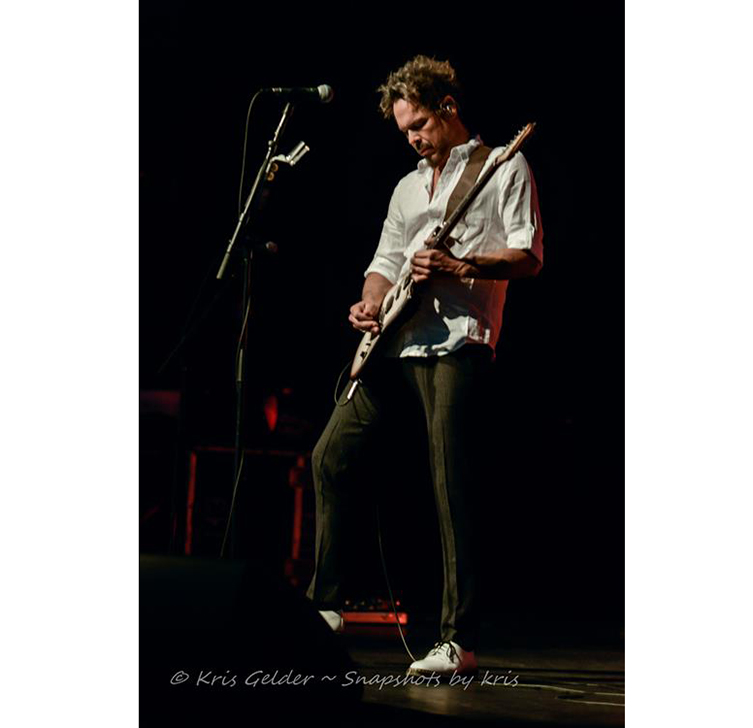
It is kind of a... I just take the back lounge of the bus and close the door and I’ll have a metronome back there so I can have my little touchstones with tempos: ‘I should be able to do this!’ It should be easy because sometimes your hands, you know...as you get older...and sometimes if it’s a tense show, or if it’s a really hot show, I’ll feel it the next day! Even though I can sit at home and play guitar for 9 hours all day and feel fine tomorrow, a show is a different thing. I’m squeezing harder, everything’s amped up a little more. Yeah, there are certain things I always tend to make sure I’ve got. And then, having said all that, as soon as you step up on stage, 95% of that goes out the window! (laughs) You’re starting from scratch again, you know? You gotta hit that high C# and it’s like, ‘Where is it? Why does it sound like that?’ Haha! You know? You just never know, man. It is an elusive thing.
GG: Keeps it exciting!
IT: Yeah! That’s how I look at it now: what are you gonna do?
GG: Yeah! See on a song like ‘I Digress’, there are some bits where the vocals go into hugely high notes. Is that something that you’re just naturally able to go to, or have you worked and worked at it? It sounds so effortless.
IT: Are you talking about range?
GG: Yeah, range, those really skyscraper-like notes.
IT: I just kinda, yeah...
GG: They’re just there.
IT: ...yeah! (laughs) It’s something you do work on, but I mean, you do that in rehearsal, you know? And the more and more I’d do it, the whole Chris Cornell thing has been dogging me since the beginning, and anytime I’d go up there, it’d be like, ‘Ah, it’s Chris Cornell’. And it’s like, I can’t really control it unless I start singing in a different language! There’s nothing I can do, cuz you’re out there in those skinny branches with those high notes. It’s gonna sound the way it’s gonna sound. I mean, I want it to sound like Jeff Buckley and Freddie Mercury. I love Chris Cornell, he’s great, but you end up sounding the way you’re gonna sound. It has to do with all your lungs, your neck, your throat, your jaw, your nose and your forehead. It’s all these weird things and how they resonate.
But yeah, I kinda shied away from doing the high stuff, the same as quicker guitar stuff. I shied away from all that in the early years. Now, I don’t really give a shit, you know?
GG: Uh-huh.
IT: Now, when somebody compares it to Chris Cornell, I’m like, ‘Well, that’s kind of a lazy comparison, in my estimation.’ I love Soundgarden, but you know.
GG: Yeah.
IT: With the fast guitar stuff, it’s like, ‘That sounds like Steve Morse’. That’s kinda lazy. Of course it does! (laughs) First of all, if it sounds like Steve Morse or Eric Johnson, do this much research to know that I’m saying, ‘I’m trying to sound like Steve Morse or Eric Johnson! (laughs) And it sounds nothing like them to me! You can tell, when I’m doing a Knopfler thing, you can tell it’s a Knopfler thing.
GG: Yeah, it’s like quoting a player because they’ve got a distinctive style.
IT: Exactly! And to my ear, when I hear it, I just sound like a too-tall Canadian kid trying to sound like Steve Morse and Eric Johnson and Stevie Ray Vaughan. (laughs) That’s what it sounds like to me! And what’s nice to hear is when someone says, ‘It sounds like Ian Thornley’! I’m like ‘Yesss! Okay, I’m doing something right!’
GG: There you go!
“Even though I can sit at home and play guitar for 9 hours all day and feel fine tomorrow, a show is a different thing”
IT: Even though I’m not really sure, I just think the people are blowing smoke when they say that, but I’ll take it! It is just a gumbo of all the things I’m into.
GG: Yeah, definitely. In regards to the high notes being compared with Chris Cornell, I mean, I get that it gets old for you but also: hardly anyone can do it! (Ian laughs) Part of the reason you get compared to him is he was one of the only other folk that could do it!
IT: That’s kinda how I feel about it sometimes! And we will have these conversations in the studio, because on this last record, there’s some stuff where it’s higher than anything I’ve ever recorded before. Sort of overdubby outro stuff, sort of wailing and having fun stuff.
GG: Yeah.
IT: Usually an end of session vocal take, right? Cuz it’s like, ‘I dunno how much gas is gonna be in the tank after this!’ (laughs) You just kinda go for it, and then it becomes an interesting, fine line to walk. Does it sound like I’m doing this just because I can? And, the flipside to that is: is that ok? Haha!
GG: Of course!
IT: ‘He’s just doing that because he can!’ Yeah, but it sounds great so why not? You have to kinda take that whole conversation outta your head and sit back and listen to it and say: ‘Is it cool?’ That’s all I wanna know.
GG: Totally.
IT: The problem is, when I was younger, I wouldn’t have gotten to that stage because it would’ve taken one look from one band member of whatever, and all of a sudden it’s like, ‘Okay, we’re done! We’re good! We’re done. I’ll just play a solo at the end, it’s cool.’ And then if something becomes too ‘look what I can do’, it’s like, it just takes one look, one drop ruins the whole fuckin’ thing. Nowadays, I’m like, whatever, let’s just keep looking here, you never know.
If you have something that’s just ‘look what I can do’, I dunno, it never feels quite right to me because I’m not one of those guys. A lot of that has to do with attitude, right? Like, if you had the right attitude and it’s coming through your playing or your singing, and just through who you are and how you are, then that can be the whole thing, you know?
GG: Definitely.
IT: It doesn’t even matter what you’re saying, if you’re saying it the right way. Some people are like that. I tend to rely a little more on what I’m saying. I’m getting a little foggy here, but you know what I mean.
GG: I hear ya! It reminds me of a quote that Tom Waits once said, whose wisdom is always worth paying attention to. He said, ‘the way you do anything is the way you do everything’. I think that’s kinda what you mean.
IT: Yeah.
GG: Your attitude infects your playing, your ability, the fact that you practise or you don’t practise, your reaction from people when you do what you do, it’s all there.
IT: Yeah! No shit, he’s a smart guy, man. (laughs) Tom waits!
GG: Tom Waits! Yeah. Now, before we segue into guitars, I’ve got one more guitar/vocal-related question: being that you are a guitar player who is also a vocalist, does the fact that you have to play and sing at the same time influence what you decide to do when you write your guitar parts?
IT: (pause) No. (laughs) Uh, no. Simple answer, no. I worry about that when I get to it! Like, when we’re in rehearsal, that’s when I worry about shit, and that’s when it’s about delegating and trying to cover all the bases. You’re never gonna cover all of it. The layers I put on a song, like I Digress for instance, the amount of layering that’s going on there, there’s no way to duplicate it live with a 4 piece. If I had a 6- or 7-piece band of multi-instrumentalists, 2 or 3 other guitar players, it makes stuff easier but there’s still stuff missing. It’s gonna be the vocal things and some of these are 4- and 5-part harmonies.
I’ve thought about using track (pre-recorded backing tracks run from a laptop – Ray) as well because some of the songs that are more structured, why wouldn’t we try that? All these guitar parts that are coming out in the chorus, there’s no way that we’re gonna...and if I go to that guitar part and the bottom drops out, it doesn’t feel like the chorus anymore. All these compromises: sometimes you can get away with them but...anyway, it’s sort of like ‘cross that bridge when you get to it’.
GG: Uh-huh.
“If something becomes too ‘look what I can do’, it just takes one look to ruin the whole thing”
IT: It’s never been a jam band situation where it’s like we do the whole thing live in the studio the way we do it on stage. I’m like, ‘no, I wanna make the best recording possible.’ Like, I want the ‘Born the Run’ more than I want ‘Nebraska’, you know what I mean?
GG: That’s a great analogy!
IT: I want all that stuff, I want all the goodies, and why wouldn’t you? That’s what you leave behind, you know? Although nowadays, a lot of people will come to the show with their phone and they’ll leave that behind on the internet (laughs). I always look at the live thing as something else.
GG: See for example, I was listening to Come What May earlier, and it has this brilliant part after the 2nd chorus where the whole band drops out and there’s just loads of harmony vocals. It’s gorgeous sounding, and I thought: ‘How are they gonna perform that live?’
IT: I don’t think we’ve ever done that song live! That was actually a last-minute idea. The song was basically done, and I was like, ‘I got an idea, go with me here!’ We agreed on it and honestly, it took less than an hour to do all the vocals. I just sort of went with it and it was done.
GG: Brilliant!
IT: It’s a Freddie Mercury, Beach Boys-kinda thing. I never thought about what we were gonna do live! Do what Queen did and press play while you walk on the stage! (laughs)
GG: Haha, that’s good: how do you do it live? You don’t. Okay, haha!
IT: I’m starting to wonder: does anyone give a shit if you use tape anymore? Is that a thing?
GG: It’s totally okay to do that.
IT: Like Muse or ah...you know, there’s all these great bands that do great stuff with it but they’re not not trying to hide anything. Why would I hide it? We’ve been raw dogging it for 20 plus years, why not have what the big boys have? When I start singing that chorus, there’s (clicks fingers) 9 Ians singing, with 4 extra guitar parts on either side! (laughs) Why wouldn’t you want that?
GG: Yeah, of course!
IT: I dunno, I’m just thinking about it but maybe the next Big Wreck show that you see will be mind blowing, haha!
Guitar Chat
GG: Haha, amazing! Now, we should probably talk about guitars!
IT: Yeah man!
GG: New, you have a new Suhr signature guitar. You’ve already had a signature JM model previously, so maybe it would be interesting to learn how you got initiated with the band in the first place?
IT: I believe it was Pete Thorn. Pete Thorn reached out to me. Like, I’d seen Pete Thorn videos and stuff on YouTube, and I’d met him, like backstage after a show or something like that. I got a message from him just after (Big Wreck album) Albatross. He reached out and said, ‘I love your record, I gave it to John Suhr, he loves it too and he wants to build ya something’. Or something like that! He just put me in touch with John, and me and John started texting back and forth. Yeah, it was basically like that! I was like, ‘Oh wow man!’, because I’ve known about Suhr since Pensa-Suhr, with Mark Knopfler and that Caramel coloured thing.
GG: Yep.
“If you have the right attitude and it’s coming through your playing and your singing, and just through who you are and how you are, then that can be the whole thing, you know?”
IT: I’ve known about him since then and Rudy’s guitars and all that. But yeah, it was just like, ‘Of course!’ (laughs) and that was it! As soon as I played one, it was over for me, and I’ve played a lot of different guitars. There are certain things I love about certain guitars, but having them all in the same place, on the same instrument at the same time is quite a thing!
It’s the same with Suhr amps: they’re tuned to my channel, and I’m tuned to theirs: I get it! In a sort of instinctive and intuitive way, I can almost tell what that stuff’s gonna do before I use it, you know? Honestly, that Hombre amp, I knew what John was going for with that. I was like, ‘Oh man, that sounds great!’ In the studio, we tend to use small amps a lot. A lot of the bigger sounds are actually small amps. It’s one of my favourite noises: a small amp, hanging on for dear life. He sent us an Hombre and I could not believe it! The Hedgehog is my favourite amp, hands down. Still is. It sees a lot of playing time. The PT sees a lot of playing time: those are my go-to in the studio when I want certain things, but once that Hombre showed up, all the other small amps were sitting against the wall! It’s just such a great sound, it’s like, ‘There it is!’
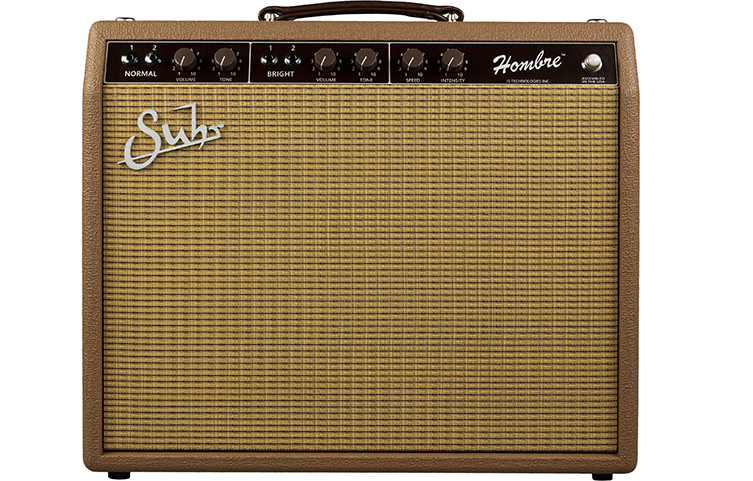
It’s the same with his guitars, it’s like his take on how to make that ‘better’, how to reverse-engineer this thing (refers to nearby guitar) that you know, even vintage-wise, you’re not guaranteed it’s gonna be great. Anything that comes out of Suhr, I pretty much guarantee it’s gonna be great.
GG: Yeah, certainly! I like his attitude about how he doesn’t really believe in such a thing as inherent ‘mojo’. If there’s something good, then it can be learned and replicated. So, with that in mind, let’s talk about your new Classic-S guitar, which has just been released.
IT: Yeah!
GG: There’re quite a few features carried over from your previous JM models, and whilst I wouldn’t say they were idiosyncratic, they are still pretty different from what you’d find on a normal Suhr Classic-S. So, let’s talk about the V neck profile and the pickup layout: what do you love about these? (Ian opens a case and grabs his new guitar)

IT: I’ve always been a fan of big necks.
GG: Do you have big hands?
IT: Yeah, they’re pretty...check out that wicked shred stretch! Haha! (displays an enormous finger span that reaches across about half of the fingerboard) I’d say they are on the big side, yeah, but it’s not even really about that. It’s about playing with my thumb sort of draped over for so long. Yeah, once I started playing with a nice V-neck, I was like, ‘Oh, that’s kinda the best of both worlds’, because I can do thumb-behind stuff, where for me it’s still closer to up-top, so I can switch to that really easily. But, generally speaking, my hand doesn’t sit flat and straight, it sits on an angle and that’s where the ‘V’ comes in. I don’t think you need to have massive mitts. It feels natural and makes sense. The only thing about most V-necks is, right around fret 7 or 9, they start to round off. I was like, ‘What if that V went all the way up?’ So that even where you’re soloing up high, you still get that comfy thing where your fingers wrap around. It’s a new take on maybe a late 50s V.
GG: And you like a very flat fingerboard then, right?
“I wanna make the best recording possible. Like, I want the ‘Born to Run’ more than I want the ‘Nebraska’, you know what I mean?”
IT: Yeah, I think so. I mean, it’s just something I started using. I was playing Music Mans for a while, and it was hurting my thumb. Then I realised it wasn’t the radius of the fretboard, it was the thinness of the neck. The Petrucci one was a great guitar, and I loved the sounds I was able to get out of it – piezo and all that stuff – it was a lot of fun at that time, but the neck was too thin. When I got my first Suhr, I think I got a compound radius and then once I started playing them and our relationship had grown, I started playing a bunch of these flatter radii, and I was like, ‘I’m into this!’ I found that, after I got used to it, I was able to get an even action, a little lower. And I tend to bend and overbend a lot, but it never chokes out. That, to me, is like...if I can get action fast enough and low enough that I can hustle, but still bend something until the string breaks, that’s the goal.
GG: Right, yeah, totally.
IT: I have an old Strat with the 7.25” radius and it’s cool and everything but I wish I could bend. I mean, you can: you raise the fuckin’ action! (laughs) But now it’s out of tune up here, there’s a whole set up thing. I tend to keep the bridge flat to the deck, 4 or 5 springs in the back and then I get the actions pretty low but not too low.
GG: Do you use the tremolo much?
IT: Yeah, but I’ll have a guitar set up floating for a specific thing. It’s not for overall.
GG: Right, it’s not to get you through a whole show.
IT: Exactly. We have a lot of different tunings in a given night, so unfortunately, that’s the reason why I have to travel with a bunch. If I could, I would take this (his new model) and another one as a backup.
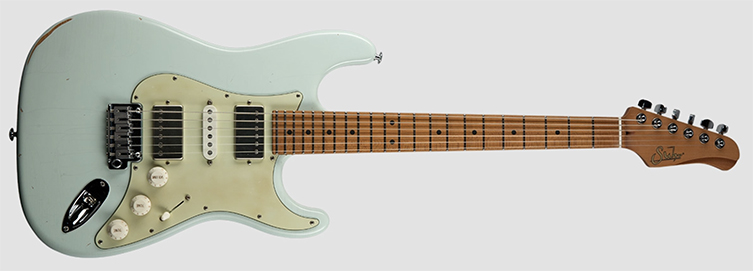
GG: Yeah, makes life easier! So, for your general guitars, what gauge strings do you prefer?
IT: Elevens! 11-49, I guess? D’Addario NYXL, 11-49, a half step down. It basically feels like tens at 440 (regular concert pitch). Kinda. It’s sorta like that because tens at 440 – I like tens at 440 – and I like the sound of tens at 440 but as the years have gone on, I’ve actually gotten lighter with strings. I’ve discovered that a half step down with elevens – and I don’t like the heavy bottoms either, like when I was with Ernie Ball, it would be the purple pack, 11-48 – it’s got the right amount of...I can still shake the note and bend it as far as I want, but I can still hustle. If I play a nice chord, I can hear all the notes in it. Like, if you asked me ten years ago what strings I used, it would be all thirteens and twelves and stuff. Um, the chords were all big, open and if I was playing a riff, it was ‘boinkier’.
GG: Yeah.
IT: I was a lot more heavy handed with stuff and it was a lot of the Stevie Ray Vaughan, machismo thing. ‘You use elevens? I use thirteens!’ What does that mean? It doesn’t mean anything! (laughs) It really is about the feel and the sound, and right now the NYXL 11 a half step down is a good home base for me. Sometimes tens, like tens at 440, it really is a thing that guitar players have known about forever! It’s like, ‘Wow, tens fuckin’ sound grrreat!’ but I’ve been doing this whole heavy string thing for so long, I don’t think I could play a set of nines. It just wouldn’t happen.
If I’m setting up a guitar to play slide, I’ll put a set of thirteens on it. Sometimes it’s just fun to dick around and play lines and chords with high action and really heavy strings: there is a sound to it. It slows you down.
GG: Not always a bad thing!
IT: Pick your words carefully with that!
GG: Yeah, exactly. You do have quite a lot of songs that involve slide. Is that one of the guitars you’re required to take on tour? A specific slide set up?
IT: Oh yeah, right now that’s the Orange, bound, T-style with gold pickups and hardware. It’s almost like a modern tough takeon an old Gretsch colour scheme.
GG: I like it!
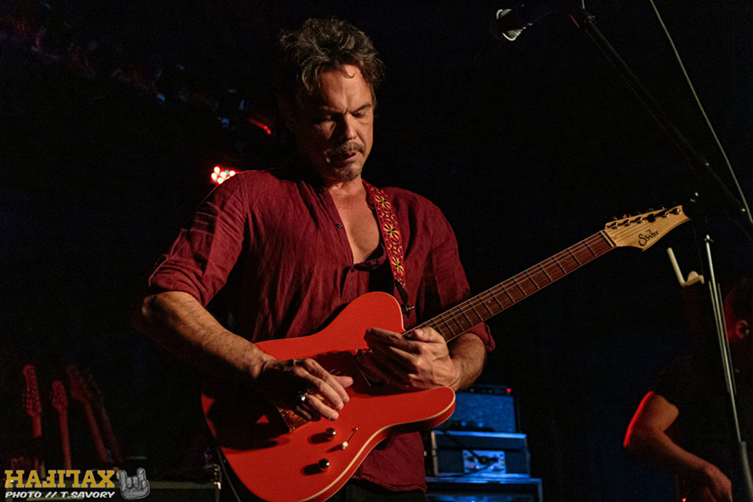
IT: I love that guitar, we call it ‘the Creamsicle’. I end up using that in the studio all the time for slide stuff. I have a ‘Coodercaster’ as well, that we kinda Frankensteined together out of a few guitars. It has a lap steel pickup with this sort of canopy that goes over the strings. There’s a sound to that that I don’t think you can get without it. I used that in the studio too but everything else was basically Suhr.
GG: Cool! One important part of every guitar player’s choice with gear is plectrums. What do you tend to prefer?
IT: (holding up pick to camera) Can you see that? A red Dunlop Flow, 1.5, whatever that is.
GG: Ah, is that one of the Prime Tone ones?
IT: Yeah, it’s the translucent red Flow. It’s a lot of fun to get around on. Yeah, it’s not for the faint of heart! You gotta hang on tight. My sort of overall choice, if I was gonna play a show right now, would most likely be this one or even the green ones. The green ones are, you know, kind of a bull in a china shop in certain ways (laughs) but sometimes in the middle of a show, in the heat of battle, that’s what you need.
GG: That’s what you need, man! I like it. Now, just to tail off on the new guitar, you’ve got the H-S-H pickup configuration and presumably that’s so you can go from Strat tones to humbucker tones, but do you ever have problems with volume changes between pickups?
IT: No! There’s never a single coil on by itself.
GG: Oh, I see. Okay.
IT: In the bridge, it’s humbucking. 2nd position it’s inside coil and the middle, so that’s for a super quacky Strat sound. Middle is these two together (points to both humbuckers). It’s a sound I tend to use a lot, kinda like the middle position on a Les Paul. Both humbuckers together, not split. 4th position is the single coil and the split neck humbucker, again, another Stratty clean sound.

GG: Kinda like Nile Rodgers?
IT: Yeah. You know the one! Yeah, it’s a very Stratty sound. And then the neck is just the neck humbucker.
GG: Got you.
IT: These two tone knobs are push/push, they switch the humbuckers from series to parallel. Not quite single coil but it kinda hollows it out a bit and keeps it hum-cancelling, which is kinda my prerequisite for all this stuff, that there’s no buzz. So any of the sounds that I use on the record, even if I’m gonna do a thing with single coils, I’ll reach for this (points to a Suhr Classic-S that’s sitting nearby): I’ll just gonna use another Suhr than doesn’t hum. It’s 2021, people: why the fuck are we still dealing with the 60-cycle?
GG: Totally!
“There are certain things I love about certain guitars, but having them all in the same place, on the same instrument at the same time is quite a thing!”
IT: Gimme a break! (laughs) So yeah, all the sounds I would use on a record, regardless of how I got them, 8 or 9 or 10 of them would be from this thing (his main Suhr signature) anyway. If I was using a Tele or a Classic -S or if I was using a Les Paul-type guitar, I can get a close approximation of all of those things with this. To me, especially if I’m tied down to a mic, I can just reach down, adjust it and it’s the verse. Click, volume up, chorus. You know?
GG: Yeah.
IT: Everything is kinda right there. If I’m using gain on everything, there’s compression, so volume changes will be negligible. And there’s no buzz. A lot of the time with single coils, half of the tone is buzz. So, there’s no signal loss when I go to a quacky sound.
GG: Awesome! And while we’re talking about tones, there’s a long list of your guitar sounds that I like, so I won’t go through them all, but what about general overdrives? Not on songs like A Place to Call Home, which has such a killer sound but it’s unique to that song, really. On your normal tones, are you mainly getting your drives straight from the amplifier?
IT: For the most part, yeah. I’ve always found that it’s just less coloured that way, you know? I don’t wanna be able to pick out what pedal it is, which is why I like a clean boost, or even a Tubescreamer-type thing, set very low. Oftentimes it’ll tighten up the bottom and just give me a bit more level. I’m not looking for the tone of it, I’m looking for push and it’s kind of a feel thing. But generally, if I’m going for a sort of hot-rodded Marshall thing, I’ll go into that (Suhr Hedgehog amp) and sort of season to taste. There’s not a lot of pedals in the studio. Well, there are, but very few of them get used. We’ll have template, let’s say, of four or five different sounds, and then sort of season to taste from there. That goes for amps too: there’s a lotta amps, and usually it’s almost never one amp on its own.
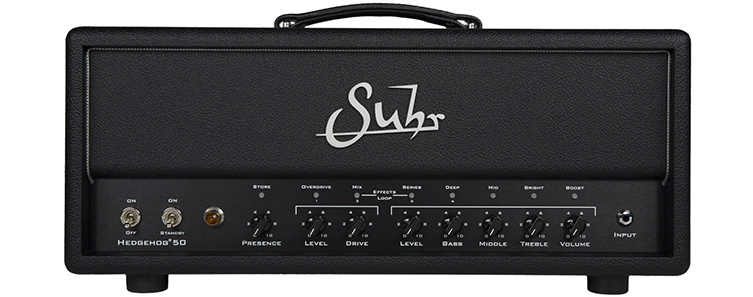
GG: Interesting.
IT: Yeah, it’s always something paired with something else. Unless it’s the Hedgehog: I’ll do a solo with just the Hedgehog. I adore the sound of that amp so much.
GG: Haha, yeah, it’s pretty great. Now, that tune Follow Me from But For the Sun, has a fantastic guitar sound. What’s going on there? It’s quite a low sound, too: is that a tuning or an effect?
IT: That’s like, if I’m a half step down now (strums guitar), you take your lowest string and match it to your A string.
GG: Ah, nice! It’s like total sludge-town.
IT: It’s a lot of fun to do! (laughs) Unfortunately, when we do it live, I do a go-off at the end of that tune with a slide, so I’m playing the song in Open A flat tuning with the low string. Unfortunately, it’s not as much fun, because there’s something about hanging onto this (demonstrates an open position A chord), starts to feed back a bit (laughs), aw, it was a lot of fun to record that tune! It’s very simple, that tuning, but I use it a lot.
GG: It’s good man!
IT: Digging In, that’s a song we did off Grace Street, that’s the first one I used that on.
Guitar Playing Secrets
GG: Digging In, yeah! I know it. So good. Now, I want to talk to you about guitar playing of course. Now, I obviously want to ask about your lead playing because it’s pretty exceptional, but you’re also a really good riff writer. When you’re writing songs, do you – like most of us – go through lots of riffs that don’t particularly work for you before you land on the good ones that make it into songs?
IT: Ehhh, yeah, it’s usually the riff that sparks the song, so it’s kinda the other way around for me.
GG: Okay.
IT: I’m not like, ‘I’ve got this song that needs a riff’ (laughs). I’m not that guy. I have riffs that need songs! If there’s a song where I’m like, ‘the riff’s not really working’, it’s gonna be a while before I give up on it because there was something about it initially that pulled me in. How do I get back to that? Have I put too much shit on it? Is it the tone? Is it the tuning? There’s gotta be something there. That process right there can take years. But I don’t...I got plenty of songs that I’ve written where I go ‘Woo-hoo-hoo! That’s bad!’, you know? (laughs) And those don’t see the light of day! But usually, there’s something redeeming!
GG: Haha, yeah, cool! So in terms of your lead guitar playing, I love it because I get a lot of surprises when I listen to it. You do a lot of things that catch my ear. For example, the lead stuff at the end of Ghosts, you quite often play ‘underneath’ the note I’m expecting, or outwith a typical scale box. I wondered; I know you’re a Berkeley guy...
IT: Yeah.
GG: So, you know your shit. I wondered if there were any...I don’t want to be so crass as to say ‘tricks’, because I know your playing isn’t like that, but are there any tips you could pass on about your style?
IT: Um, well, I’m always looking, you know? I’m always looking for... sometimes (plays a generic lead lick on his Suhr) isn’t enough, you know? You want... you want more (laughs). But within a pentatonic box, you can go down a straight Em Dorian all day and it sounds like Rock/Santana/Blues Guy, right?
GG: Very much so.
IT: But if you wanna just take the 6 into the natural, that C in there just makes things sad to me. So, these things, I’ll keep in mind, and if I want things sad and tense then I’ll use the 9 a lot more, because there’s that tritone. Keep in mind, I’m still in E minor. The 7 is a good choice (Ian is playing all of these notes for me, which helps considerably in understanding things! - Ray), you wanna throw in some sass, you do the flat 5, right? All those things are just choices, right?
GG: Yes.
IT: So, it’s not really about tricks for me. For playing a solo, home base is always gonna be that pentatonic box, or one of the boxes, just like any other ‘Rock dude or gal’, you know what I’m saying? But within those, I always know where my little flavour notes are. Another one I did on a cover of War Baby that we did, is sliding into the tonic, and then whipping off the flat too. If you slide into the root, into the tonic, then you go into like (plays a nice lead lick), it kinda gives it a smooth jazz thing, haha! I like half step things, little bends, but a lot of that just comes from dicking around and dicking around. As far as the music theory thing goes, it’s: ‘What am I going for, feeling-wise?’ and then knowing what’s available to me as I’m going along. I’m by no means a super jazz guy, but I have a little bag of things that work for me that I constantly work on, expending. And constantly surprising yourself, within that, you know?
GG: Building on what you’ve said, do you think it’s kind of like learning your theory, but developing an emotional opinion on the theory?
IT: Well, the emotional opinion comes before the theory does. The emotional connection that I have to a sound like a major 3rd and this note (plays his example): before I knew it was Lydian, I knew what it felt like. At the start of any movie, when the MGM logo or whatever comes up, it’s always that sound, and as a kid, I never knew what Lydian was, but I could identify a sound and a feeling with it. All theory is, is putting names to things. A lot of the more advanced theory is, ‘well, how can I use that?’ You can then use those sounds and emotions to tug at the listener.
“As far as the music theory thing goes, it’s ‘What am I going for, feeling-wise?’ and then knowing what’s available to me as I’m going along”
When you’re really in the moment and rolling with it, you’re not thinking about anything. In the studio, generally speaking, when it comes to putting down a solo, I’ll do a bunch and sort of like different parts of each one. Sometimes it’s all in one go, and sometimes it’s like: ‘Ok, what’s a better way to say that?’ Sometimes that sounds a little too scripted so I’m like, ‘Ah, fuck it: go!’ and that’ll work. Generally speaking though, the ones that sound like a piece – like the one at the end of Ghosts is just ‘press record and go’ – but the one in the middle, I spend maybe ten minutes working out. I wanted it to sound like it was a part. I came to the studio ready to do battle!
GG: Amazing man. So, I have absolutely loads here! I guess a nice little way to finish things off would be: you’ve finished recording, and there’s going to be a new single soon which is unrelated to the recordings you’ve just done, so whether it’s an album or a couple of EP’s, are we expecting these other recordings this year?
IT: Yes. Yeah.
GG: Right, and hopefully with things opening again, do you guys have tentative plans to tour?
IT: Yeah, I mean that’s what I’d say about that. There are so many things that we’ve had to scrap, and Toronto for some reason is behind the 8-ball with the whole vaccine thing, it’s really frustrating, but I think Canada as a whole has been sorta tripping up and running into hurdles. But yeah, exactly as you said: we’re tentatively planning tours and, not so much this single when it comes out, but when the album or EP’s come out, yeah, obviously I just wanna tour, tour, tour. Get out and play as much as possible! So, yeah: we’ll see what happens. I dunno, man: it’s been such a weird, daunting year and a bit for all of us. I don’t even know if I know how to play a show anymore!
I have a feeling it’ll all come back to him pretty quick! It’s true that I had to cut the conversation off after 90+ minutes: we could’ve kept going! Still, we managed to cover a ton of ground, and Ian was particularly open and sharing about lots of the inner details of his playing. Hopefully, there’s a bunch of stuff in there that you can apply to your own playing, as well as lots of fun details about Big Wreck being in the studio! It’ll be interesting to see whether the songs become an album after all, or whether a couple of EP’s are released instead. Time will tell, and it’s exciting to be ‘in on it’ ahead of time!
It really was a pleasure to share some time with such an engaging, entertaining and knowledgeable individual. Like us, Ian just lives and breathes music and guitars. His knowledge is as vast as his experience, and his friendly inclusiveness meant that we were able to delve deep and learn a lot. We hope this comes across in the transcribed text above.
Keep an eye out on the official Big Wreck website for news of forthcoming releases and shows. Click to view the Suhr Ian Thornley guitars, or better still, visit us and try one for yourself!
We’d like to thank Ian once again for his generous time and excellent attitude. We’d also like to thank Nigel at Suhr for helping put us in touch with Ian. Special thanks go out to you, for reading this in-depth piece! If you enjoyed it, be sure to click through to our guitarguitar interviews pages for many more just like this one.
Keep an eye out for more interviews soon!
Until then,
Ray McClelland



